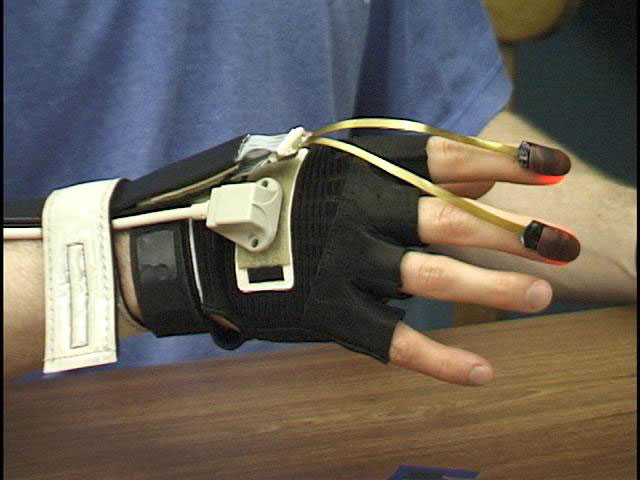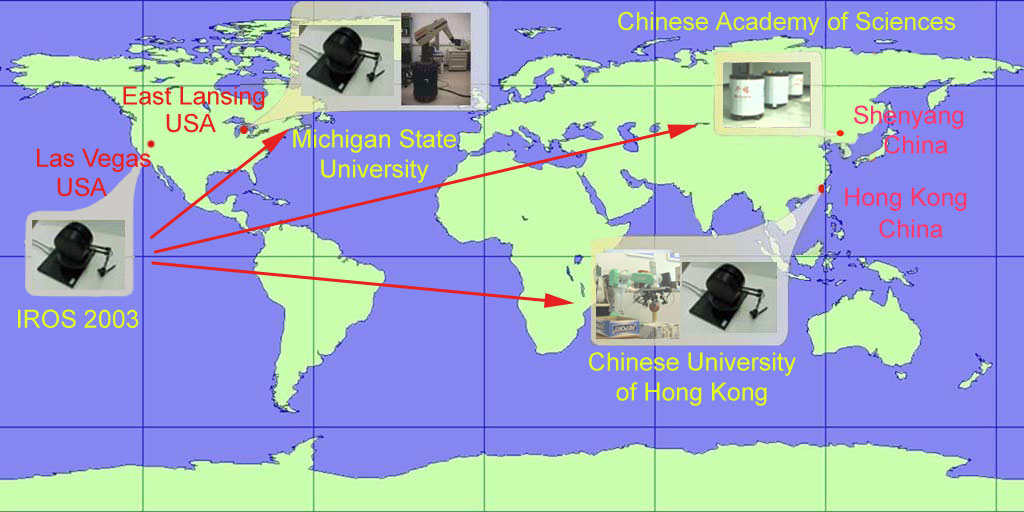|
October 21, 2003
 Note About
Images
Note About
Images
Photo 1

The RoboMote: A platform for research in robotic sensor networks.
Credit: USC Robotic Embedded Systems Lab (PI: Prof. Gaurav S. Sukhatme)
Photo 2

Fingernail sensors unobtrusively measure the state of the human fingertip. The sensors optically measure the pattern of blood volume in the capillaries beneath the fingernail, which depends predictably on the posture of the finger as well as the forces of the fingertip pressing against a surface (including two dimensions of shear force).
Credit: Stephen Mascaro, MIT
Photo 3

The five-inch wide COTSScout (left), 15-inch MegaScout (center) and four-inch Scout (right) from the University of Minnesota Center for Distributed Robotics.
Credit: University of Minnesota Center for Distributed Robotics
Photo 4

Digital Clay combines the intuitive sculpting of natural clay with intelligent, programmable haptic feedback to the sculptor. The photograph shows two implementation concepts: the "formable crust" and the "bed of nails." The formable crust uses a new implementation of the ball joint (foreground) that, when combined as illustrated (on the middle left), enables the shell to conform to arbitrary shapes. As implemented in stereolithography (upper left), it can be scaled to fine resolution. The bed of nails concept and its control is studied using an expandible 5x1 array of cells (upper right). With MEMS technology under development for valves and actuators, this concept will be scalable to higher resolution, similar to the surrogate bed of nails model of a camera (middle right). This stereolithography model was created for user studies of the needed resolution and optimal surface.
Credit: Georgia Tech Digital Clay Team: M. Allen, W. Book, I. Eber-Uphoff, A. Glezer, J. Goldthwaite, D. Rosen, J. Rossignac, C. Shaw and their colleagues and students
Photo 5

Ning Xi at the Michigan State University Robots and Automation Lab and collaborators have designed a system so that people in different parts of the world can control mobile robots and receive "supermedia" feedback at remote locations via the Internet.
Credit: Michigan State University, Chinese University of Hong Kong, Chinese Academy of Sciences
Photo 6

Samples of robotic sensor "skin" with stretchable gold electrodes deposited onto compliant silicone elastomer membranes.
Credit: S.P. Lacour, S. Wagner, Princeton University
|

